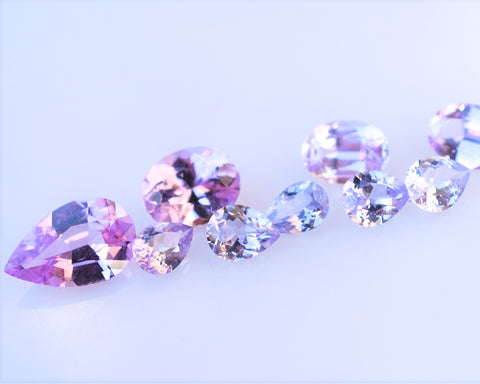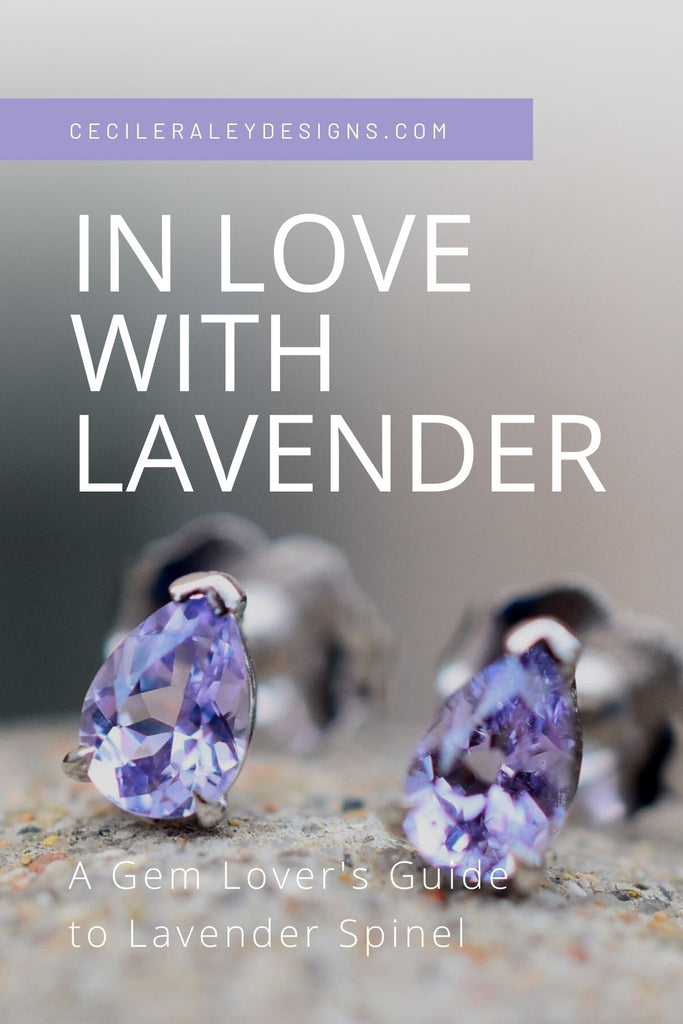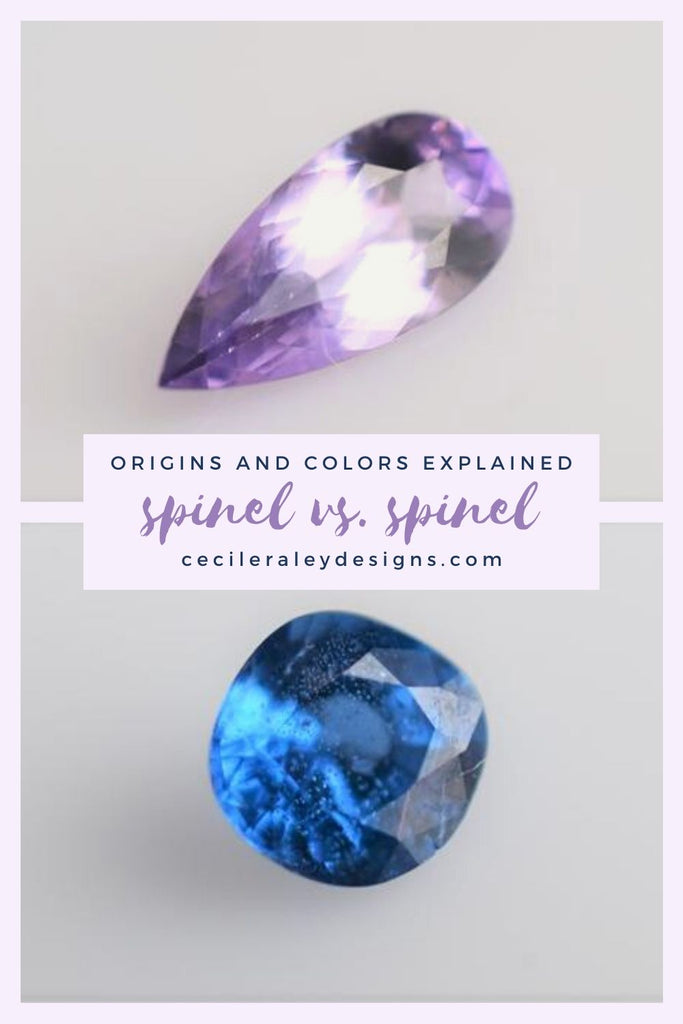Loving Lavender Spinel: Where Can You Get That Color?

So I announced lavender as one of the colors of 2021, thus trumping (or dumping) the official color of “butter yellow”, as much as I like butter. Obviously, this means we now have to talk about lavender gems: sapphire, spinel, and, if you like, amethyst, Tanzanite. And for me, the discussion should start with the underdog: spinel.
“Lavender” is not a color recognized by gemstone labs, which will use terms like “light purplish pink or light pinkish purple” instead. Lavender tones can range from a more blueish to a more pinkish tone, some of which I call another unofficial name: lilac. In many ways lavender is a subjective color: how purple can a lavender gem be? How light, how blue, how pink? Also, how much gray can it have before it becomes gray with a purplish tint?
This last question is particularly important when grading and valuing spinel, most of which has a grayish tint and is most valuable when there is less of that. The lavender spectrum in spinel ranges all the way from fully gray with a slightly purplish tint to a very faint purple or lavender or pink that barely has any color at all, and everything in between, including deep purples and blues.
And what is the most valuable lavender color? The one with the least amount of gray, of course. Purest colors are preferred by most eyes, and this goes for lavender as well. The eye also loves some saturation, hence the strongest and least gray lavender is what we love most, where the direction of lavender – pink or purple – seems to be more of a matter of personal taste.

Not all locations produce spinels in the purple range, but many do. There are no lavenders in Mahenge, Tanzania but there are some in Tunduru, Tanzania. Lavenders come from Sri Lanka, Tanzania, Burma, Vietnam, Afghanistan. The most grayish tones come from Sri Lanka and Burma, which is why I don’t favor those origins. Burma offers wonderful reds of course but also straight grays and grays with all other secondary tones like blue, purple, lavender, pink, up to platinum and silvery tones and even whites. Sri Lanka has fewer pure grays but lots of grape tones, grey blue, rosy grayish pinks, as well as some greens and orangish tones.
My favorite sources of lavender spinels are, ranging from least to most preferred: Tunduru - Tanzania, Parawara - Afghanistan and Luc Yen - Vietnam.

Tunduru - Tanzania: As I noted above, that origin is not known for its gray tones. Rather, you see a nice mix of light pinks, purples, blues with a little gray, silver, some peachy pinks but no orangish tones. Lavender is less common than the other tones.

Parawara - Afghanistan: This region is not far from the Tajikistan mines known for red and pink spinels, but produces lavender spinels instead. The find is recent, first heard about in 2017 when gem dealer Dudley Blauwet purchased a 56-gram parcel of rough at a gem market in Pakistan – the faceted material from this you see offered as an exclusive in our shop (the three largest gems from this rough were analyzed by GIA to characterize this new spinel). Another parcel made its way to Bangkok. It yielded a small amount of very large gems sold on the Chinese market. GIA characterizes the sample spinel received as having shades of blue and strong purple colors. The smaller gems are lighter and more lavender. Neither have any significant color change. After 2017, not much of this material resurfaced, most of it heavily included, and the region is politically unstable so it’s unclear when there will be more.


Luc Yen - Vietnam: This is on the very TOP of my list for gem treasure hunts, as soon as it’s safe, and permitted, to be back out in the world. In my view, the purest purples come from this region, but also lighter violets and pinks. Whether your preference is toward the more blue or the more pink, you will love looking at it. There are also some light imperial tones, leaning towards peach but always with less gray and more pink than peach or orange. Strong silvery or very light grays do not occur much or at all.
Continue reading

















